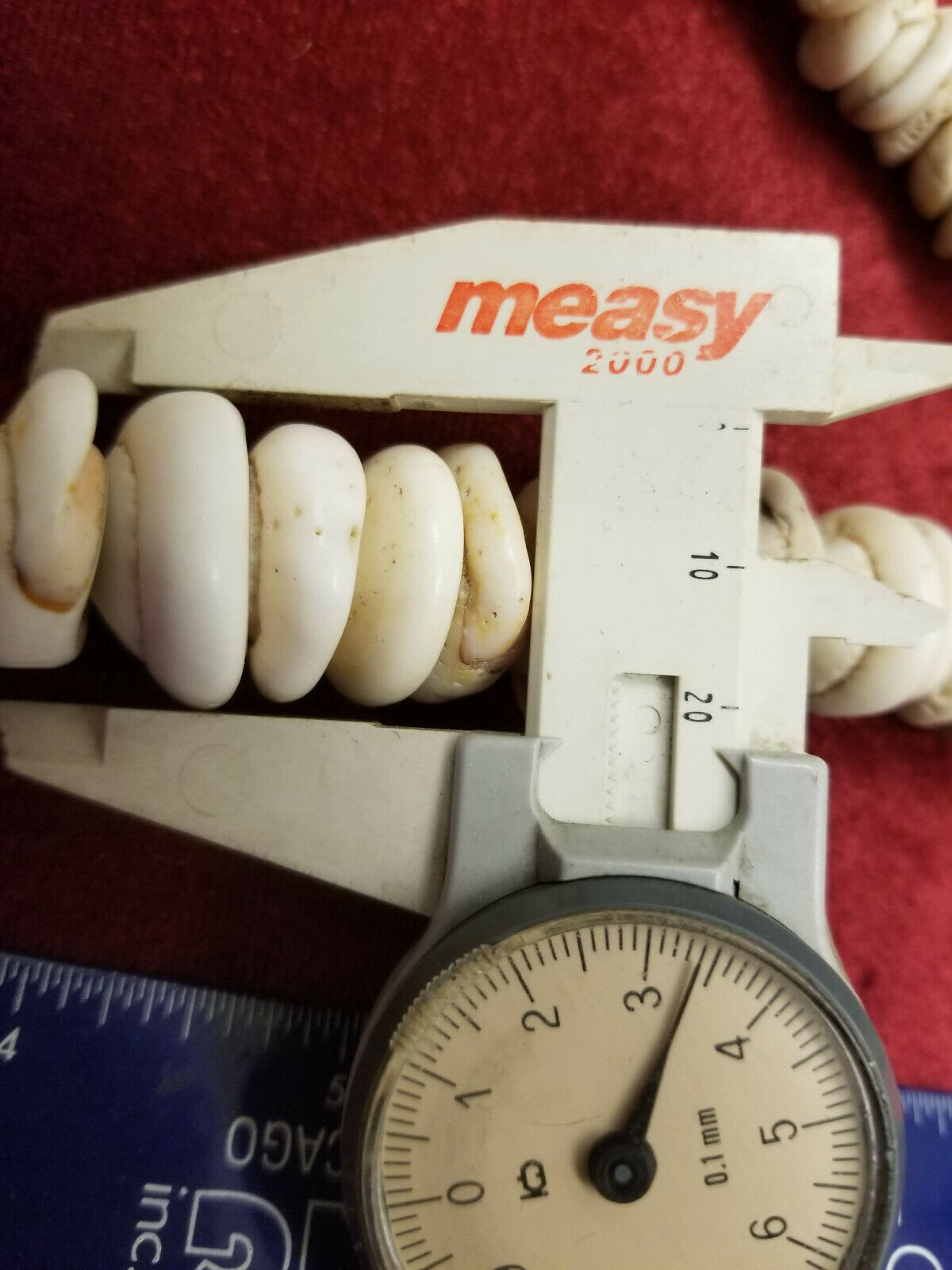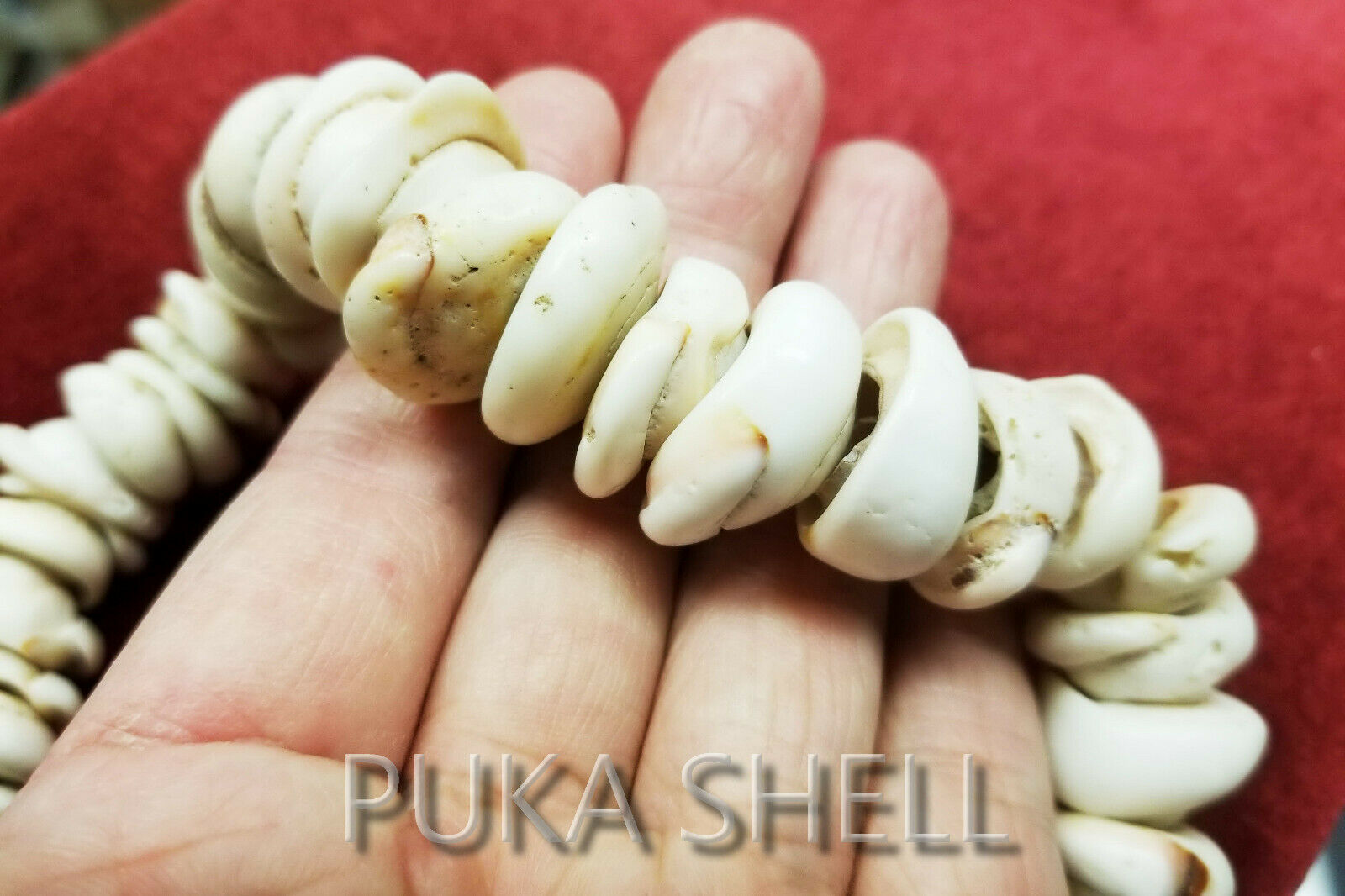-40%
Massive PUKA Shell Necklace 19" Hawaiian Surfer 176GRAMS Vintage Waikiki Hawaii
$ 189.48
- Description
- Size Guide
Description
Amazing graduated puka shell beadsvintage puka shell necklace.
Measures 19" inches.
Widest bead is 23mm size
Shows a weight of 176 grams on scale.
Creamy off whites to reddish tan mottles stripes and
imperfect as mother nature intended.
Each shell is different with many imperfections:
cracks,fissures,difference in tones, off whites, tan
surface mottled craters, dings and dimples.
Shells from ocean and picked off of beach.
Shells found on shores of Waikiki long ago.
since made of mother nature. Largest bead is
little under 1" inch or 23mm size.
Nice statement piece and heavy.
Finished with silver tone
Barrel clasp.
Condition:
Appears to be on original stringing which is intact,
but recommended re-stringing before use since monofilament gets brittle with age.
The shells are in found beach condition.
```````````````Mahalo for looking!
History of Waikiki-wikipedia
The area was a retreat for Hawaiian royalty in the 1800s who enjoyed surfing there on early forms of longboards.[4] A few small hotels opened in the 1880s. In 1893, Greek-American George Lycurgus leased the guest house of Allen Herbert and renamed it the "Sans Souci" (French for "without worries") creating one of the first beach resorts. Later that year Robert Louis Stevenson stayed at the resort; subsequently it became a popular destination for mainland tourists.[5] The area at coordinates 21°15′49″N 157°49′17″W is still called "Sans Souci Beach".[6]
Waikiki has had erosion problems since the late 1800s, because hotels and homes were built too close to the natural shoreline, while seawalls and other structures blocked the natural ebb and flow of sand along the beach. By 1950, more than 80 structures, including seawalls, groins, piers and storm drains, occupied the Waikiki shoreline.[7]
The first high-rise hotels on Waikiki were built in 1955, including the Waikiki Biltmore and Sheraton Princess Kaiulani Hotel. Development boomed due to demand, and the area became filled with large resort hotels, such as the Hilton Hawaiian Village, Halekulani, the Hyatt Regency Waikiki, Marriott Waikiki, Sheraton Waikiki. These complemented historic hotels dating back to the early 20th century such as the Moana Surfrider Hotel and the Royal Hawaiian Hotel).
The beach hosts many events, including surf competitions, outdoor performances, hula dancing and outrigger canoe races. The many amenities, shops, and hotels enable Waikiki to generate approximately 42 percent of Hawaiʻi's visitor revenue.[8]
In the early 1900s, Waikiki was home to many wetlands, which were believed to harbor disease-carrying mosquitoes. To get rid of the mosquitoes, islanders created the Ala Wai canal. The canal, originally known as the Waikiki Drainage Canal, was created by a Hawaiian dredging company run by Walter F. Dillingham. The project took about seven years, 1921–1928.[9]
In the early 20th century, Duke Kahanamoku became a well-known surfer in Waikiki. Throughout his life and after competing in the Olympics, many people around the world wanted to learn to surf. Duke's influence made Waikiki beach a surfing hotspot.[10] "Dukes", a club in Waikiki named for Kahanamoku, helped Don Ho produce music and hosted the longest-running show in Waikiki.[11]
In the 1920s and 1930s sand was imported from Manhattan Beach, California, via ship and barge.[12]
In the early 1900s, plans for the Ala Wai Canal were developed to help with drainage and seawalls and groins began to appear. These helped build sand at one beach, but typically appropriated sand from others. Before 1950, Waikiki beaches were continuous. They became separated into sections, some with sandy beach and others without.
Following World War II, Waikiki beach restoration efforts have occurred every few years. Sand was imported to this artificial beach from the 1920s to the 1970s, once by boat and barge from Southern California. 1,730 feet (530 m) of shoreline was replenished at a cost of .4 million following chronic erosion of more than a foot a year.
Importing stopped in the 1970s. In March 1971, the Corps of Engineers Pacific Ocean Division, created a Draft Environmental Statement for the Kuhio Beach Sector of Waikiki, which aimed to improve the overall quality and size of the fading and narrowing shoreline.[13]
Waikiki beach looking towards Diamond Head
From October 29 through November 4, 2000, the first FINA World Open Water Swimming Championships, were held in the waters off Waikiki Beach.[14]
A partial restoration was completed in the spring of 2012. The project imported sand from nearby shoals and widened the 1,700-foot (520 m) long beach by about 37 feet (11 m) between the Royal Hawaiian Hotel




















